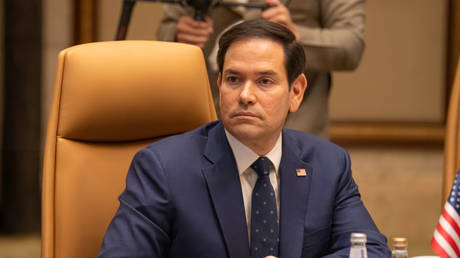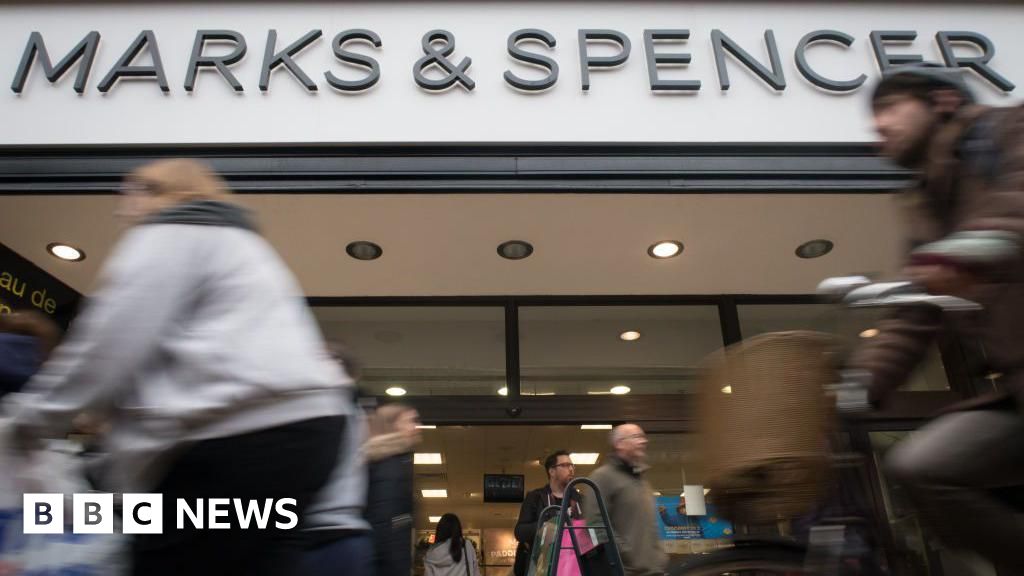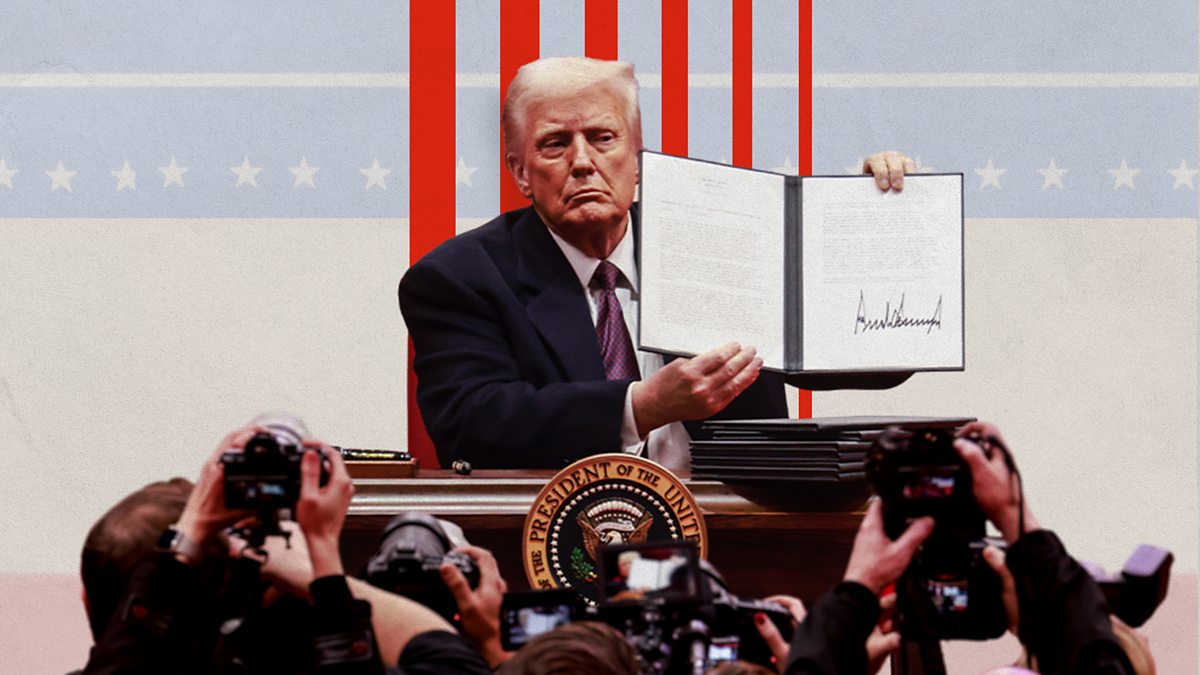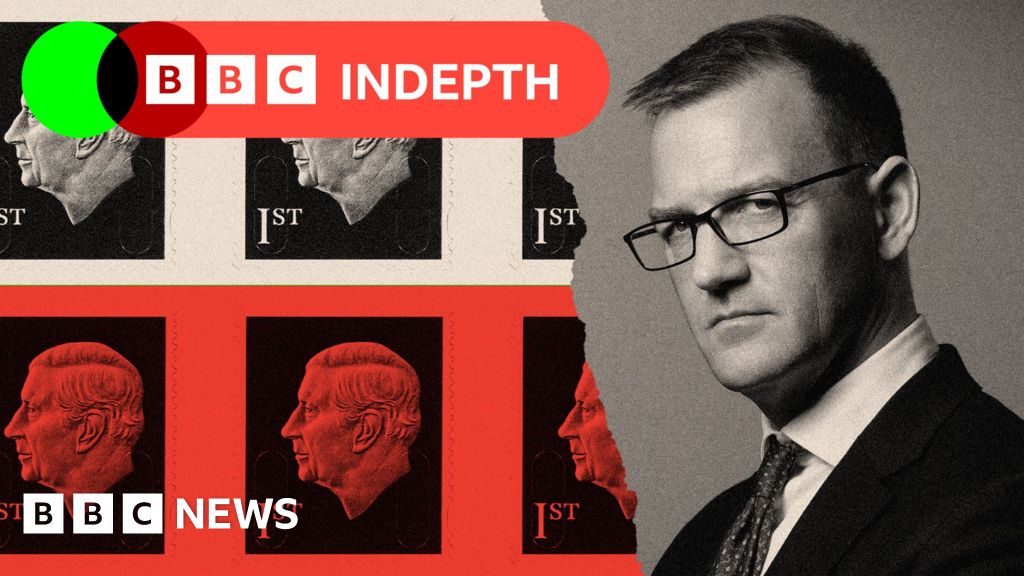Of course we deserve to know the true cost of tariffs

For one exhilarating moment, it sounded like Amazon was about to make a gutsy pro-consumer move. On Tuesday, Punchbowl News reported that the company would “soon show how much Trump’s tariffs are adding to the price of each product” by specifying it “right next to the product’s total listed price.” That act of transparency would have been reminiscent of past precedent-shattering Amazon initiatives such as its 1995 introduction of user-written reviews—including ones so stinging as to drive customers away from a product.
And then Trump 2.0 reality set in. White House press secretary Karoline Leavitt attacked the idea of tariff disclosure as “hostile and political,” another confirmation that Trump’s oft-expressed contention that American consumers wouldn’t bear the cost of higher tariffs never jibed with basic economics. An Amazon spokesperson claimed the notion had been under consideration only for the company’s Temu-like Amazon Haul bargain store and was “not going to happen.” Trump himself chimed in to say he had called Amazon founder Jeff Bezos, who “solved the problem very quickly and he did the right thing.”
To be fair, it’s unlikely that Amazon could have introduced anything like a universal tariff line item for the 600 million-plus products in its online store. It only designs a few devices itself, giving it the requisite intimate knowledge of their supply chain. Mostly, the company is a reseller, and more than half of the transactions on its site are third-party sales it facilitates for other merchants. It surely doesn’t know how much tariffs added to the cost of every random HDTV it sells—and if it did, presidential whim might change the math from day to day.
Still, even if Amazon breaking out tariffs at the point of purchase turned out to be a fleeting fantasy, it was an instructive mental exercise—maybe even a powerful idea that’s tough to unimagine once you’ve thought about it.
Why should anyone care about the percentage of an item’s price represented by tariffs—a form of taxation most of us have cheerfully ignored until recently, even though it has a 236-year history in the U.S.? First of all, a reliable accounting would counter misinformation spread by the president. He’s backpedaled some on his past stance that tariffs only burden manufacturers in other countries. However, absent dramatic developments such as iPhones suddenly going for $2,000, it may be tough to tell exactly what his increases are doing to our purchasing power. Explaining it on an item-by-item basis would help.
But the impact of tariffs on my own wallet is just one reason why I crave hard facts. Trump’s interpretation of global trade—that China is ripping off the U.S. because we buy more stuff from it than it buys from us—is plainly ridiculous. His attempt to use tariffs to spark a renaissance in American manufacturing is already backfiring, given that factories here need parts produced elsewhere, and other countries are retaliating with stiffer tariffs on U.S. products. (Fun fact: A Corning plant in Harrrodsburg, Kentucky, exports the Gorilla Glass pervasive in phones and other devices.)
All of this, I already know. Yet except for a few high-profile items like the iPhone—whose production Apple may ramp up in India to avoid tariffs on Chinese imports—I don’t claim to understand much about the endlessly complex tales behind the products I buy.
The tariff backstory for individual purchases we’re considering making is arguably a more valuable data point than a superficial, potentially misleading “Made in the U.S.A.” or “Made in China” label. It would be a visceral reminder of how fundamentally connected the world economy is. Globalists and isolationists alike would get something out of it.
It’s not just tariffs. The more I ponder the situation, the less informed I feel as a consumer. I tend to take the Nutrition Facts information box on packaged foods for granted and rarely dig any deeper than the figures on calories and fat. But it’s hard to imagine life without that box. When I refreshed my memory about its history, I was startled to learn it came into existence only a little over 30 years ago, mandated by a 1990 bill signed by President George H. W. Bush. Before that, food makers got to choose what they disclosed—or didn’t—about the products they sold.
An equivalent box for other goods would make us all smarter. There’s plenty of fodder beyond tariffs: other taxes, product recalls, warranty information, carbon footprint, and on and on. In the unlikely event that a Nutrition Facts for Everything bill passes Trump’s desk, he’s not going to sign it, so I’m filing the idea away for future reference.
In the meantime, I hope there are merchants out there willing to post tariff numbers, at least for certain products. Countless companies have spent this entire century trying to keep up with Amazon, often by copying its innovations. Here’s a rare chance for them to gain an edge on the e-commerce behemoth by going where it won’t.
You’ve been reading Plugged In, Fast Company’s weekly tech newsletter from me, global technology editor Harry McCracken. If a friend or colleague forwarded this edition to you—or if you’re reading it on FastCompany.com—you can check out previous issues and sign up to get it yourself every Friday morning. I love hearing from you: Ping me at [email protected] with your feedback and ideas for future newsletters. I’m also on Bluesky, Mastodon, and Threads, and you can follow Plugged In on Flipboard.
More top tech stories from Fast Company
Why online shopping feels like a chore in 2025
A new Criteo study finds that most shoppers now view online shopping as functional, overwhelming, and even lonely—sparking a renewed interest in in-store retail and personalized digital experiences. Read More →
Duolingo doubles its language offerings with AI-built courses
The edtech giant launched 148 new classes developed by generative AI as it phases out contract roles and accelerates course creation. Read More →
This new app helps chronic latecomers stay on time
Lately sends timed alerts, tracks progress, and gamifies punctuality to help users overcome time blindness and improve daily time management. Read More →
The NFT market fell apart. Brands are still paying the price
Once a marketing gold rush, Web3 bets by brands like Nike and DraftKings are now ending in courtroom battles—and collapsing consumer trust. Read More →
Skype saved me in a war zone. Now it’s going away
Microsoft is shutting down the app that helped me call home from Ukraine during a Russian invasion. Read More →
How to find and cancel forgotten online subscriptions that are costing you a fortune
You can save a lot by ditching online subscription services such as apps and video, music, and news sites. Here’s how to do it—fast. Read More →
What's Your Reaction?
 Like
0
Like
0
 Dislike
0
Dislike
0
 Love
0
Love
0
 Funny
0
Funny
0
 Angry
0
Angry
0
 Sad
0
Sad
0
 Wow
0
Wow
0





























































































